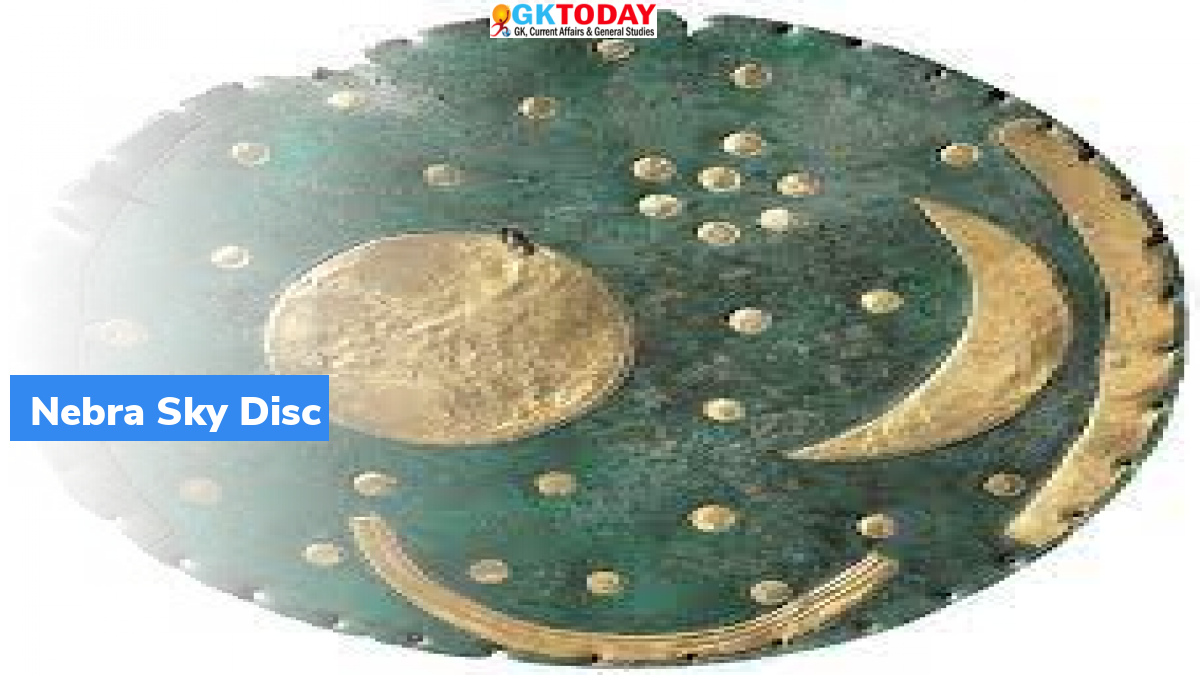Nebra Sky Disc
The Nebra Sky Disc is an artifact that belong to 1600 BCE. It is the oldest map of stars found on the earth. The value of the disc is 11 million USD. It was found in 1999 in Germany. The disk was discovered by treasure hunters. Along with the Nebra Sky Disc other artefacts were discovered. They were two hatchets, two bronze swords and fragments of spiral bracelets.
About Nebra Sky Disk
The disk is made up of bronze. It is 30 centimetres in diameter. The weight of the disk is 2.2 kilograms. It has a blue-green colour. Also, it has gold symbols laid. The symbols interpret sun, full moon, a lunar crescent and stars. The cluster of stars in the disc is interpreted as Pleiades (seven sisters star cluster). Pleiades are a group of 800 stars located 410 light years away from the earth. They are located in constellation Taurus.
About Nebra Sky Disk burial
The disk was buried along with axes, swords, arm rings and chisel about 3,600 years ago. It was buried near Nebra in Germany. Archaeologists believe that the burial of these objects was dedication of gods.
Significance
The disc projects the astronomical knowledge of European people belonging to bronze age. The disc has precise measurements of angle between rising and setting points of the sun at summer and winter solstice. It also depicted the yearly course of the sun. There are other older complexes such Stonehenge and Goseck circle that were used to mark the solstices. However, Nebra Sky disc is the oldest.
UNESCO Memory of World Register
The Nebra Sky Disc was included in the register in 2013. The UNESCO termed the disc as one of the most important archaeological finds of the 20th century. The UNESCO Memory of World Register is maintained by UNESCO Memory of World Programme. It safeguards the heritage of humanity. It works to preserve archeological holdings.
How was the disk developed?
The disk was developed in four stages. They are as follows:
- At first 32 small gold circles, a crescent shaped plate and a circular plate were created. The 32 circles represent the stars. Of these 32, 7 were placed closer to each other depicting the Pleiades. The crescent shaped plate is the moon and the circular plate represents the sun.
- At some later years, two arcs were added to the disk. These arcs were added at opposite edges. The arcs span an angle of 82°. The arcs indicate the angle between the positions of the sunset at winter and summer solstice.
- After some years, another arc had been added to the plate. This was added at the bottom. According to the archaeologists, this may be a rainbow. This arc was also made of gold but it originated from a different source.
- When the disk was buried, 39 holes were punched around its perimeter. Each hole was 3 mm in diameter. The researchers are yet to decipher the purpose of the holes.


